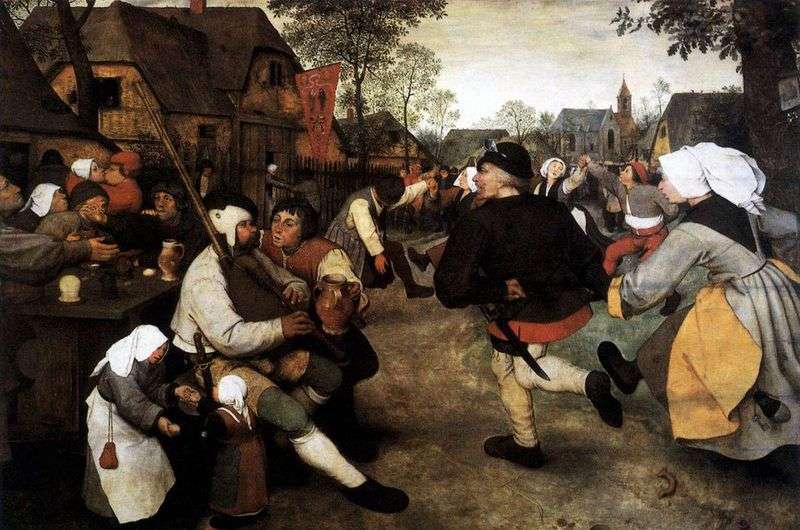
Painting “Peasant Dance”. In the years 1567-1569, Peter Bruegel performed a number of paintings on the themes of folk life. Apparently, Brueghel managed to create one of his best genre works – “Peasant Dance”. Her plot does not contain allegory, and the general character is distinguished by a self-contained pathos and rigid rationality. The artist is interested not so much in the atmosphere of a peasant festival or in the picturesqueness of individual groups, but the peasants themselves are their appearance, facial features, habits, the nature of gestures and the way they move.
The heavy and strong figures of the peasants are depicted in large scale in Brueghel’s uncharacteristic, creating the elements and natural power of nature. Each figure is placed in an iron, piercing the whole picture of the composite axes system. And every figure seems to be stopped – in dance, argument or kiss. Figures seem to grow, exaggerate in their scale and significance. Finding an almost superreal credibility, they are filled with a rough, even ruthless, but inexorably impressive monumentality, and the scene as a whole is transformed into a kind of clot of characteristic features of the peasantry, its spontaneous, mighty power.
In this picture, a specific peasant genre is born according to its method. But, unlike later works of this kind, Bruegel informs his images of exceptional power and social pathos. When this picture was written, the strongest uprising of the masses-the iconoclasm-had just been suppressed. The attitude of Bruegel to him is unknown. But this movement was from the beginning to the end of the people, it shocked contemporaries with the obviousness of its class character, and, it seems, Brueghel’s desire to concentrate in his painting the main, distinctive features of the people is in direct connection with this fact.
Connected with iconoclasm and another work of Brueghel – “Peasant Wedding”. Here the acuteness of the vision of the national character has increased even more, the main figures have acquired an even greater, but somewhat exaggerated power, and in the artistic fabric of the picture the allegorical beginning has revived. The three peasants look at the wall, horrified or perplexed, from the front, outside the picture. Perhaps this is a hint of a Biblical story about the feast of Belshazzar, when words appeared on the wall that predicted the death of those who had stolen treasures from the temple and wished to come out of their trivial state.
Recall that the insurgent peasants, who fought with Catholicism, thundered the Catholic churches. The shade of some idealization and Brägel’s uncommon softness even has a taste of bitter regret and good humanity – qualities that were not in the clear and consistent “Peasant Dance”. Some deviation from the principles and ideas of “Peasant Dance” can be found in the drawing “Summer”, at first glance close to the named picture. However, a complete departure from the old hopes was made a little later, when the master created a series of gloomy and cruel pictures, including the famous “Blind.” Indirectly, they are associated with the first crisis in the development of the Netherlands revolution.
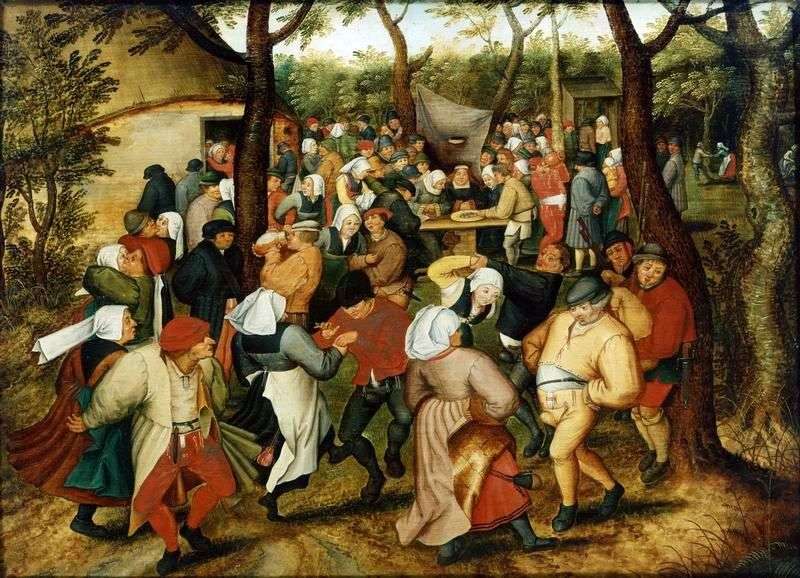 Wedding Dance by Peter Brueghel
Wedding Dance by Peter Brueghel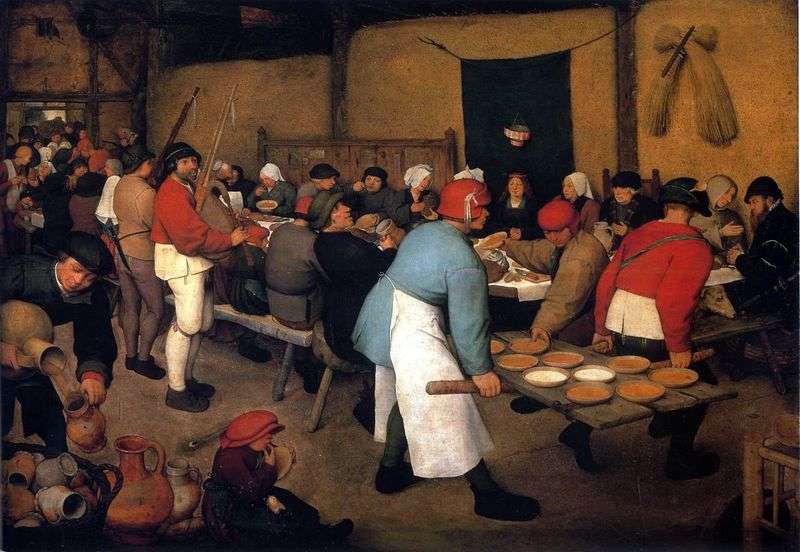 Peasant Wedding by Peter Brueghel
Peasant Wedding by Peter Brueghel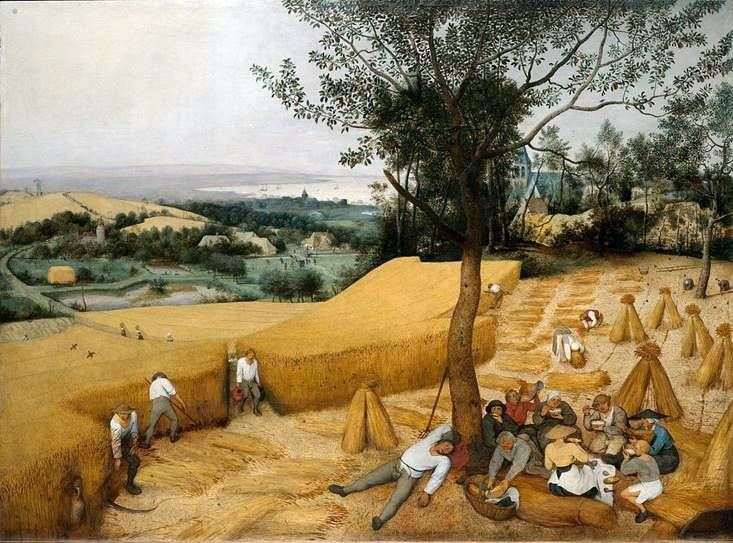 Harvest Summer by Peter Brueghel
Harvest Summer by Peter Brueghel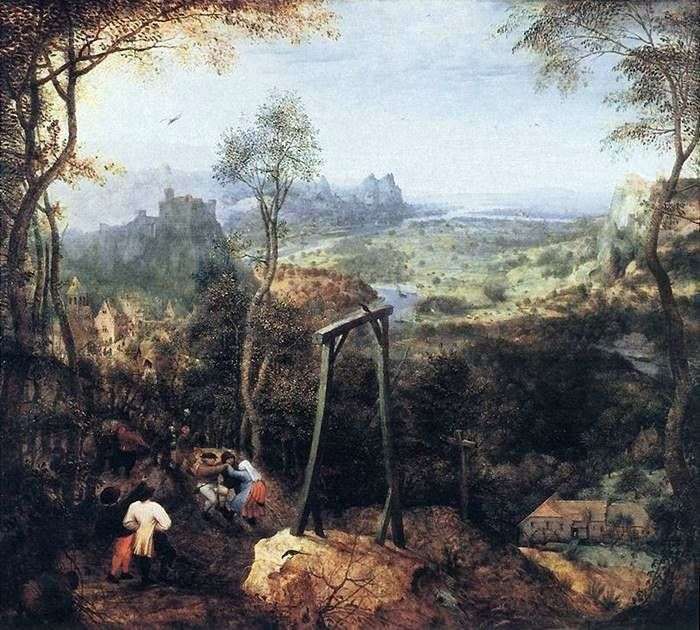 Magpie on the Gallows by Peter Brueghel
Magpie on the Gallows by Peter Brueghel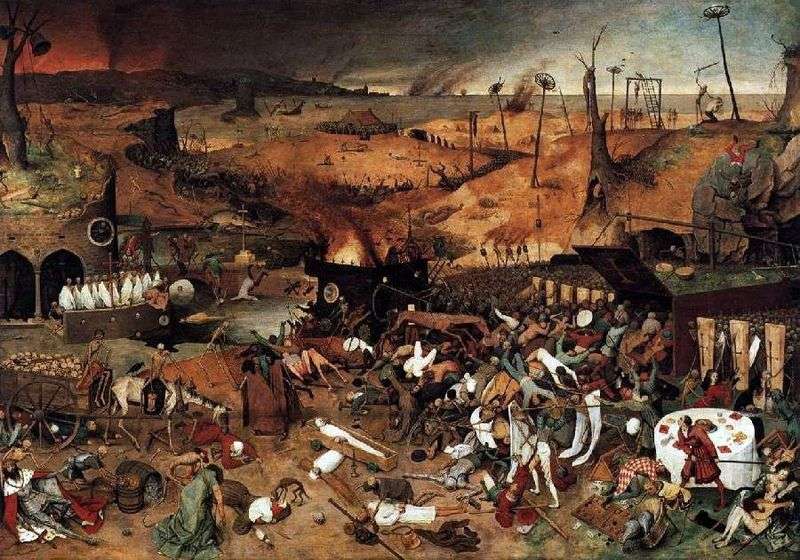 The Triumph of Death by Peter Brueghel
The Triumph of Death by Peter Brueghel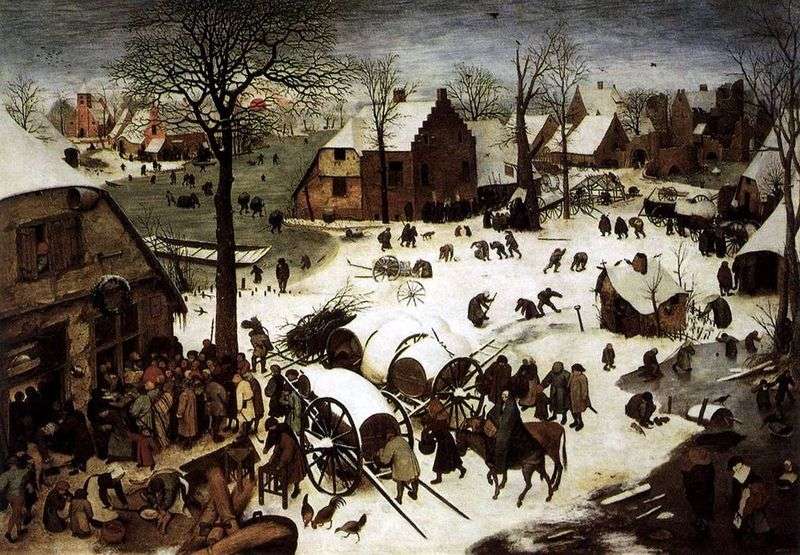 Census in Bethlehem by Peter Brueghel
Census in Bethlehem by Peter Brueghel Peasant and peasant planting potatoes by Vincent Van Gogh
Peasant and peasant planting potatoes by Vincent Van Gogh Peasant dances by Natalia Goncharova
Peasant dances by Natalia Goncharova